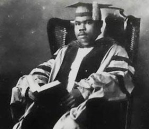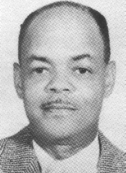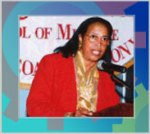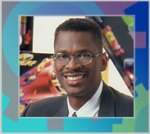THE CULTURE CORNER
________________________________________________________________
“A people without the knowledge of their past history, origin and culture, is like a tree without roots.”
Marcus Mosiah Garvey (1887-1940)
Every year in October we celebrate BLACK HISTORY MONTH. Black history is with us every second, minute, hour, week, month and year. PANTHER NEWSLETTER’S CULTURE CORNER will attempt to enlighten you with what they never told you in your history class. Our story will be told right here – So enjoy the journey of clarification.
________________________________________________________________
Not widely known but true…
Did you know…?
Through out history, African Americans have invented some important and fun devices? Here are three examples…
Otis Boykin
Otis Boykin (1920–1982) invented the electronic control devices for guided missiles, IBM computers, and the pacemaker.
Fact: Boykin invented 28 different electronic devices.
Dr. Patricia E. Bath
Dr. Patricia. E. Bath (1949–) invented a method of eye surgery that has helped many blind people to see.
Fact: Dr. Bath has been nominated to the National Inventors Hall of Fame.
Lonnie G. Johnson
Lonnie G. Johnson (1949–) invented the world-famous watergun, the Supersoaker.
Fact: Johnson’s company just came out with a new Nerf ball toy gun.
________________________________________________________________
The Black Wall Street
89 years ago; the date was June 1, 1921 when “BLACK WALL STREET”, the name fittingly given to one of the most affluent all-BLACK communities in America, was bombed from the air and burned to the ground by mobs of envious whites. In a period spanning fewer than 12 hours, a once thriving Black business district in northern Tulsa lay smouldering, a model community destroyed and a major African-American economic movement resoundingly defused. Read on…
________________________________________________________________
A Lesson in History
The island of Jamaica is about 50 miles wide and 150 miles long. Its north coast is about 100 miles south of Cuba and 100 miles west of Haiti. Jamaica was a British colony from 1655 until 1958; it became a fully independent state in 1962. A steam rail road that opened in 1845 between its capital, Kingston, and Spanish Town was one of the first rail roads in the Americas, preceded only by lines in the U.S, Canada and Cuba. Continue…
________________________________________________________________
More tributes to our S/Heroes
William Cuffay (1788 – 1870) was born in Chatham, his father, a freed slave from St. Kitts, was a cook on a warship. Cuffay, became a travelling tailor in his late teens and stayed in that trade his whole life. His political life began when he came out on strike in support of his fellow tailors in 1839. As a result, he lost his job, and joined the movement in support of the People’s Charter. The Chartist movement, the forerunner to the Labour Party, was the first mass political movement of the British working class. Before long Cuffay emerged as one of the prominent leaders of the Chartist movement.
John Richard Archer (1863 – 1932) – The first black mayor in UKwas the first person of African descent to hold civic office. He became a councilor and later Mayor in Battersea in London. He was also the first British black person to represent his country at an international conference abroad, and the first black person to become an election agent for a Labour Party constituency. Archer was born to Richard Archer, from Barbados, and Mary Teresa Burns, from Ireland, in Liverpool. He travelled the world as a seaman, living in the USA and Canada, and then settled in Battersea with his wife, Bertha, a black Canadian. He ran a small photographic studio at a time when photography was in its infancy.
Arthur Wharton (1865 – 1930) was Britain’s first black footballer. He was born in Ghana; his father was half Grenadian and half Scottish, his mother was from Ghanaian royalty. In 1882 Wharton moved to England to train as a missionary, but left school to pursue a sporting career. A talented athlete, he set a new world record for the 100 yard dash (10 seconds) at Stamford Bridge in 1886. He was first signed as a semi professional football player with Preston North End in 1886, as a goalkeeper. He turned fully professional in 1889, when he signed for Rotherham United, and in 1894, Sheffield United poached him. He retired from football in 1902.
Audrey Layne Jeffers CM, OBE (1898 – 1968) was born in Port of Spain Trinidad. She was a social worker and the first female member of the Legislative Council of Trinidad and Tobago. Although born to an upper middle class family, Jeffers was moved from an early age by the sufferings of the poor and dispossessed. Jeffers established the Coterie of Social Workers which provided free lunches to poor school children.
Leslie Arthur Julien Hutchinson (1900 – 1969), known as “Hutch” was born in Gouyave, Grenada and was one of the biggest cabaret stars in the world during the 1920s and 1930s. “Hutch” was rumored to have had relationships with Ivor Novello, Merle Oberon, and actress Tallulah Bankhead. The rumors include affairs with Edwina Mountbatten and members of the British Royal Family which supposedly led to his social ostracism and the destruction of his professional career.
Dame Hilda Louise Gibbs Bynoe, DBE was born in Crochu, Grenada, West Indies in 1921. A former doctor and Hospital Administrator, she was governor of Grenada, Cariacou and Petit Martinique (British Dependency) between 1967 – 1972. Hilda Bynoe was the first woman Governor of a Commonwealth of Nations country. She is so far the only woman to have been governor of one of the British Dependencies.
Shirley Chisholm was the first black woman elected to the United States Congress. In 1964, Shirley was elected to the New York State Assembly and during her four years in the State House, nine of her own bills were passed by the assembly and four signed into law.
Lena Mary Calhoun Horne Hayton (1917 – 2010), lovingly known as Lena Horne; Africa/American singer, actress, civil rights activist and dancer. Horne joined the mike chorus of the Cotton Club at the age of sixteen and became a nightclub performer before moving to Hollywood, where she had small parts in numerous movies, and more substantial parts in the films Cabin in the Sky and Stormy Weather. Due to the Red Scare and her left-leaning political views, Horne found herself blacklisted and unable to get work in Hollywood.
Returning to her roots as a nightclub performer, Horne took part in the March on Washington in August 1963, and continued to work as a performer, both in nightclubs and on television, while releasing well-received record albums. She announced her retirement in March 1980, but the next year starred in a one-woman show, Lena Horne: The Lady and Her Music, which ran for more than three hundred performances on Broadway and earned her numerous awards and accolades. She continued recording and performing sporadically into the 1990s, disappearing from the public eye in 2000.
Here ends your history lesson for this month.
________________________________________________________________
Log on for more CULTURE CORNER next month and remember…
“You have to be taught to be second class; you’re not born that way.”
Lena Horne (1917 – 2010)
‘Til next month – Everyting Bless.
share this:
Related
This entry was posted on May 30, 2010 at 10:00 am and is filed under Articles, Black British Literature, Black History, Newsletter with tags Articles, Black British Literature, Black History, Newsletter. You can follow any responses to this entry through the RSS 2.0 feed. You can leave a response, or trackback from your own site.





June 10, 2010 at 9:32 am
[…] THE CULTURE CORNER « Panther Newsletter […]
A brilliant newsletter! – Keep spreading the word.